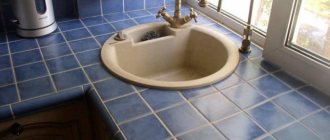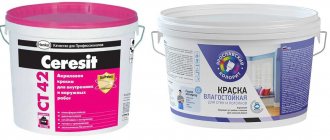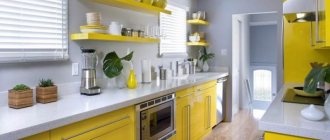Modern finishing materials are distinguished by a variety of colors, shapes and properties. Thanks to this, everyone can realize their dreams of an ideal interior in their home. However, when developing a design project or even simple estimates, you should understand what exactly the market can offer in principle. For example, a clear understanding of what the standard sizes of wall tiles are will help you accurately calculate the required quantity, and therefore save money.
Types of ceramic tiles
Ceramic tiles come in the following types:
- Majolica
- Faience
- Cotto
- Clinker
- Red gres
These are the main types of tiles that are in great demand among buyers. Let's now talk in more detail about each of them.
Majolica has a large-porous texture. It is made from red clay. This tile is covered with an opaque glaze. On which you can apply an image. This tile option can be used for laying walls in rooms where the humidity level is low.
Many people know faience as white ceramics. It contains white clay. The front side of the tile is covered with glaze. This tile is produced by double firing. This tile option can be used in dry rooms to cover walls and floors.
Cotto tiles are made from red clay. This version of the tile is obtained by one firing. Its surface looks like tubercles. This model is most used for laying interior floors. Sometimes this type of tile can be seen on open floors or facades.
Tiles that have a multi-colored compacted base are called clinker. It goes through one firing. This tile option is thicker and is also very resistant to chemicals.
It can be used for laying external and internal floors and facades. If you have a swimming pool, then this tile option can also be used.
Red gres is made from red clay. Many buyers know this tile option as porcelain tile. It goes through one firing. It will be used to transform interior and exterior floors.
Apron design
Majolica is a decorative type of exquisite ceramic tiles with a colored porous base (the most famous and valuable is Italian majolica). It is made using a special ancient technology: experienced artists, before firing, hand-paint each tile in a special way directly onto the raw colored glaze. Carbonate, sand, a certain type of clay and iron oxide are mixed as raw materials in certain proportions, which ultimately gives majolica a traditional muted pinkish tint.
There are two stages of firing: first to fix the body of the tile, and then to the enamel applied to it, due to which the majolica turns out shiny, perfectly smooth, without cracks or bubbles on the surface. Any inaccuracy in such meticulous and masterly work leads to damage to the product, and therefore the cost of tiled majolica is very high. The most popular sizes are 20 x 20, 15 x 20 and 15 x 15 centimeters.
It is majolica, as well as brick-like ceramic tiles, that are most often used to decorate the backsplash of kitchen areas.
14photos
Choosing the right tile size
There are a large number of tile sizes. Everyone can choose something suitable for themselves.
- Before you buy tiles, you need to know exactly what area will be laid with this building material.
- With this data you will be able to calculate the exact number of tiles needed.
- This is also necessary so that experts can suggest which option and size will look better at the installation site.
- With the help of tiles you can visually expand your territory, or, conversely, reduce it.
- Therefore, whenever possible, try to contact designers so that they can help you choose the right not only the size, but also the color of the tile.
When you come to the store, the employees will also be able to help you with sizes and recommend a good manufacturer of ceramic tiles.
If you have a small room area for laying tiles, then you do not need to purchase large tiles. In order to visually divide one zone into two, it is better to use different shades.
Why does the cost of porcelain tile depend on its thickness?
The cost of porcelain tiles is directly dependent on the thickness of the slabs. The thicker the porcelain slab, the more raw materials and coloring pigments are needed for its production.
Due to the increase in the volume of raw materials for the production of one slab, the duration of the technological process naturally increases. The mixing of the raw materials lasts longer to ensure even distribution of the pigment.
At the same time, the baking time of the slabs increases. The thicker the layer of raw material, the longer it takes for moisture to evaporate and the higher the processing temperature should be. To ensure that porcelain stoneware does not lose its strength, it must cool gradually after baking. Thick slabs take longer to cool down and the process is delayed.
The greater the thickness of porcelain stoneware, the higher the risk of slabs of different calibers appearing in one batch. During production, the volume of the mixture constantly changes, either up or down. Even the most modern computers are not able to measure the amount of raw materials with milligram precision. The greater the weight of the raw materials required for the production of one slab, the more difficult it is to predict what shrinkage it will result in.
The process of laying ceramic tiles
If you decide to start laying tiles, you must follow a special sequence that every tiler must follow.
It is as follows:
- The installation process should begin from the far corner, and then move towards the door;
- In order for the tiles to be even, you need to use a rope with which you can make even seams. Also, the installation height will be at the same level;
- Use special nails that will help maintain the exact distance between the tiles;
- Try to make a base row at the end. It will smooth out all the unevenness;
After completing the work, it is advisable to grout the seams between the tiles. It will keep the tiles clean and give a beautiful look.
Tiles for toilet and bathroom
Very often, many clients plan to install tiles in these two rooms. This option is very convenient and practical in future use. This makes it easy to care for her.
The choice of this building material is very large, but many do not know what exactly to choose for these rooms. So let's talk about this in more detail.
If you need to renovate your bathroom, then try to observe the following:
- For walls it is better to choose glossy tiles;
- Lay the floor with matte tiles;
- Dark color must be applied to the floor and lower part of the walls;
- Try to lay the bathing areas in the bathroom or shower stall with contrasting tiles in relation to the main color;
- If you want to add some decoration, you need to use relief tiles;
- Large tiles are best used on the floor.
Schemes for laying out tiles on the walls
When decorating walls with tiles, you must follow the following basic rules:
- layout from the middle of the wall to the corners;
- the size of the cut tile is greater than or equal to half of the whole tile;
- the same size of cut cladding along the edges of the wall;
- either a complete match of the seams on the walls, floor, or their complete mismatch.
Matching seams of floor and wall coverings. There is no particular visual gain from such a coincidence, but the labor intensity increases.
Relative to the vertically drawn line, which is the middle of the wall, the tile can be in two positions - adjacent to the edge, overlapping with the center of the wall cladding aligned.
Depending on the ratio of the sizes of the wall and the tile, a wide beautiful cut at the junctions with adjacent walls can be obtained in both cases, as in the diagram below.
Two options for laying out tiles from the middle of the wall, left and right.
Square tiles are laid in a grid (vertical and horizontal seams are aligned with each other).
The “hog” cladding most often imitates brickwork with dressing in adjacent rows for half the length.
Designer cladding “hog”.
Rectangular tiles are laid vertically or horizontally in a grid. In the first case, the visual effect of increasing the height of the bathroom ceiling is achieved. The second option allows you to visually expand the area of the bathroom, “pushing the walls” of the room.
Rectangular tiles in the bathroom interior. The use of mosaics on surfaces of complex configurations.
The most difficult area inside a bathroom to decorate with ceramics is traditionally the wall with the doorway. Therefore, a special layout scheme is used here:
- on each section to the left and right of the doorway, the correct layout is performed according to the above algorithm;
- Whole tiles are mounted above the door from the sides to the middle;
- In the center, two cut tiles are used, the size of each of which is more than half of a whole tile.
Installation of tiles above the door.
The technology is considered universal, that is, it allows you to beautifully lay tiles of any size on walls of different lengths.
When laying out the tiles in height, it is necessary to take into account the sinks. Ideally, there should be no narrow strips of tiles above the sides of these plumbing fixtures.
The size of the tile allows it to be laid without narrow stripes above the plumbing.
In the average bathroom of an apartment in a multi-entrance building of most standard series, the walls are small, one or two of them are constantly occupied by bath accessories and wall cabinets/shelves. Therefore, instead of borders around the perimeter of the room, it is better to use vertical decor - tiles with a pattern, which is placed on walls free from furniture and clothes (usually above the bathtub, inside the shower stall).
Correct use of tiled decor in the bathroom.
Ceramic tiles for the kitchen
The owners also use tiles in this area. It is laid on the floor and kitchen apron. If you like this building material of large sizes, then it is better to use it for the floor. The quality should be matte for flooring.
The kitchen apron can be decorated in different ways. The size of a large tile does not need to be used in this particular place; the mosaic will look very beautiful. The tile master will also be able to lay out a beautiful design on the apron, so you should think about it in advance and prepare it in order to clearly show it to the master.
Another popular option for a kitchen backsplash is to use artificial stone bricks.
Facade cladding
If you are faced with the task of cladding the facade of a building, it will be useful to learn about existing standards. As in all of the above cases, square and rectangular tiles can be laid on the façade.
The following standards are known today:
- Rectangular tiles – 71×46, 120×65, 192×142, 213×111, 213×107, 250×65, 250×140, 292×92, 292×142 and 292×192 mm.
- Square tiles – 21×21, 46×46, 48×48, 71×71, 92×92, 142×142, 192×192 and 292×292 mm.
Conclusion So, as you can see, the choice of tiles is not limited only to style and design, for example, whether it will be laminated or matte. The size and thickness play an important role. We hope that our material helped you understand all the types of tiles. Additionally, you can watch the prepared video material.
Floor tiles
If you need to transform your flooring, the best option would be ceramic tiles; they have a thick and hard protective coating. It will be able to protect it from various floor damage.
Each client will choose any tile shape for themselves. This is how it happens:
- Square;
- Rectangular;
- Multifaceted tiles.
The size of this building material is very diverse. It all depends on your needs.











